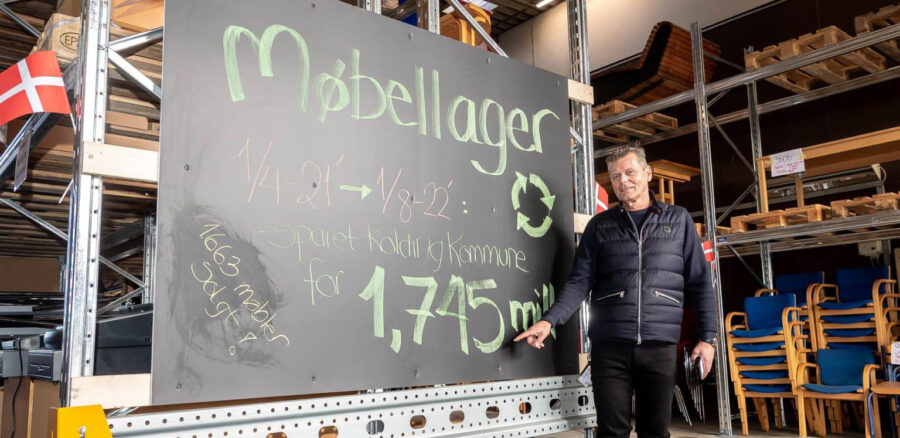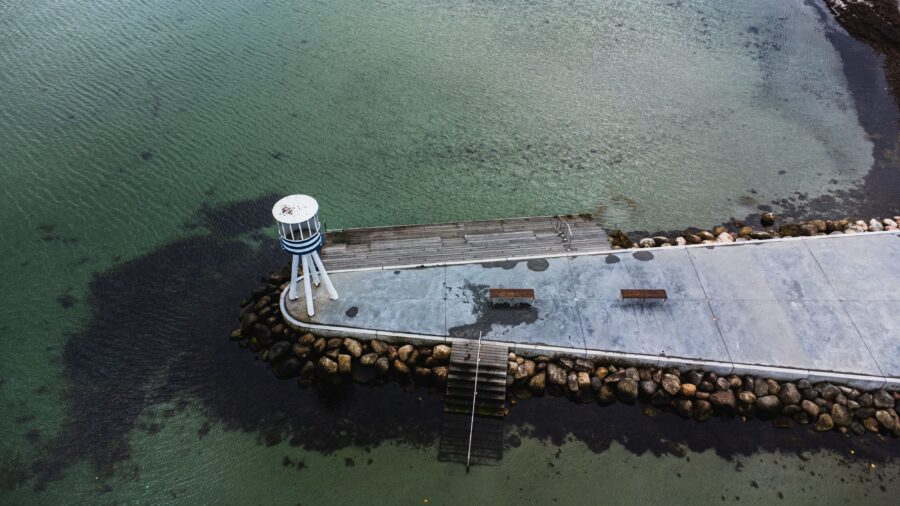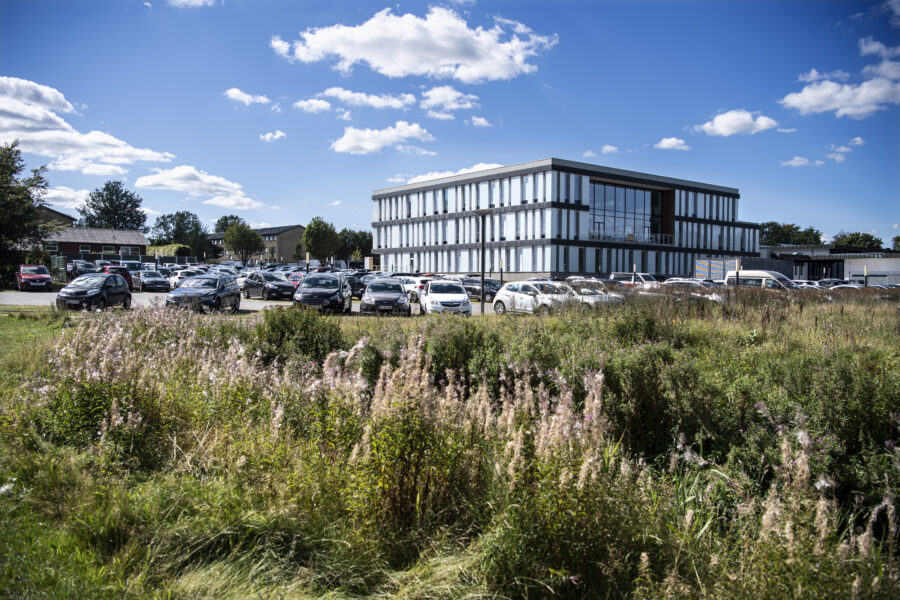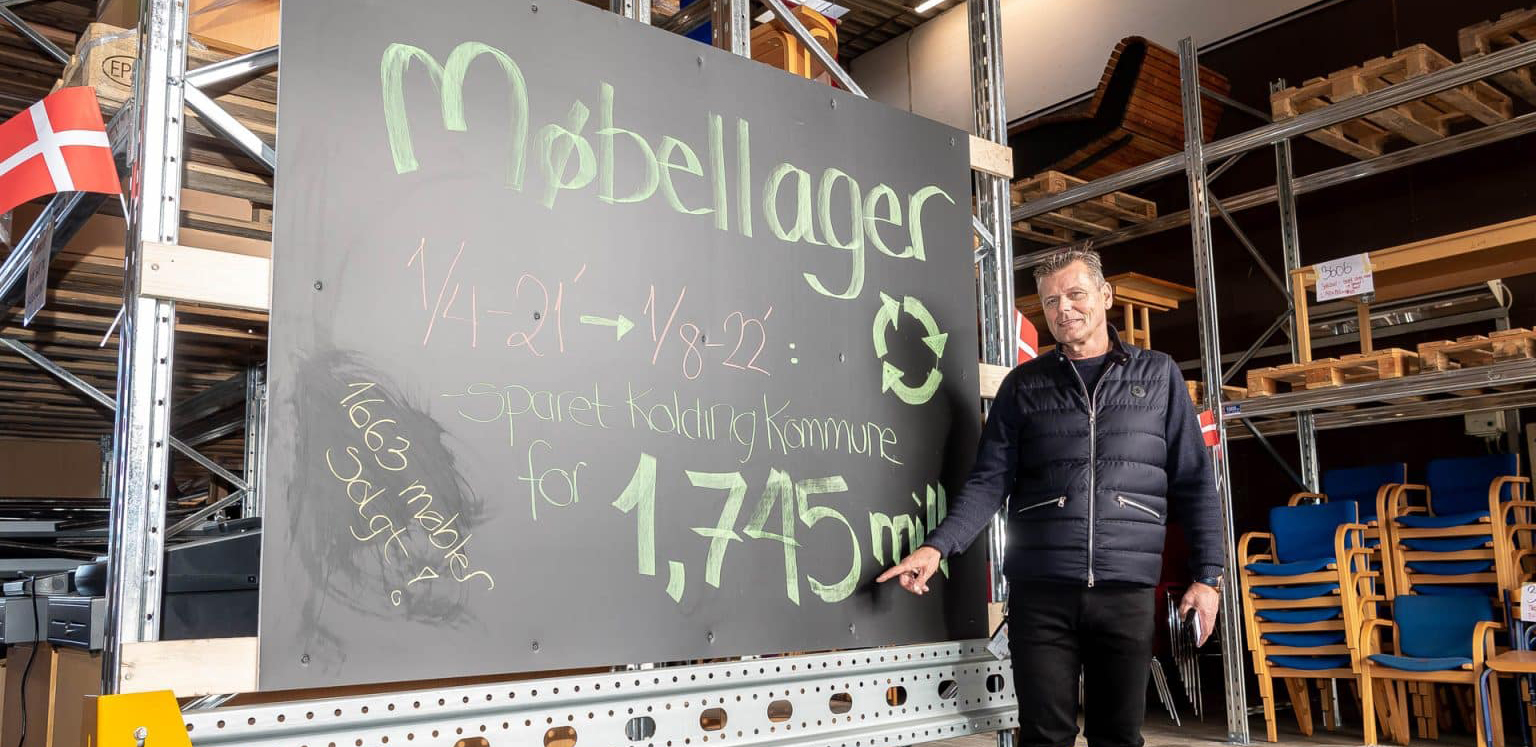
The Challenge
Why buy new when the basements are already full of usable furniture? In Kolding Municipality, the idea emerged to put surplus furniture back into circulation and make visible everything that was hidden away. In schools, offices, and institutions, perfectly usable furniture was piling up without being reused, while at the same time new pieces were being purchased. That was expensive, and it cost both materials and CO₂ emissions.
The task was to create a solution that united systems and people, making reuse a natural part of everyday life. The goal was clear: save money, reduce waste and CO₂ emissions, and strengthen a culture where employees think reuse before new purchases. At the same time, the impact had to be documented, which required oversight, data, and central coordination instead of scattered ad hoc efforts.
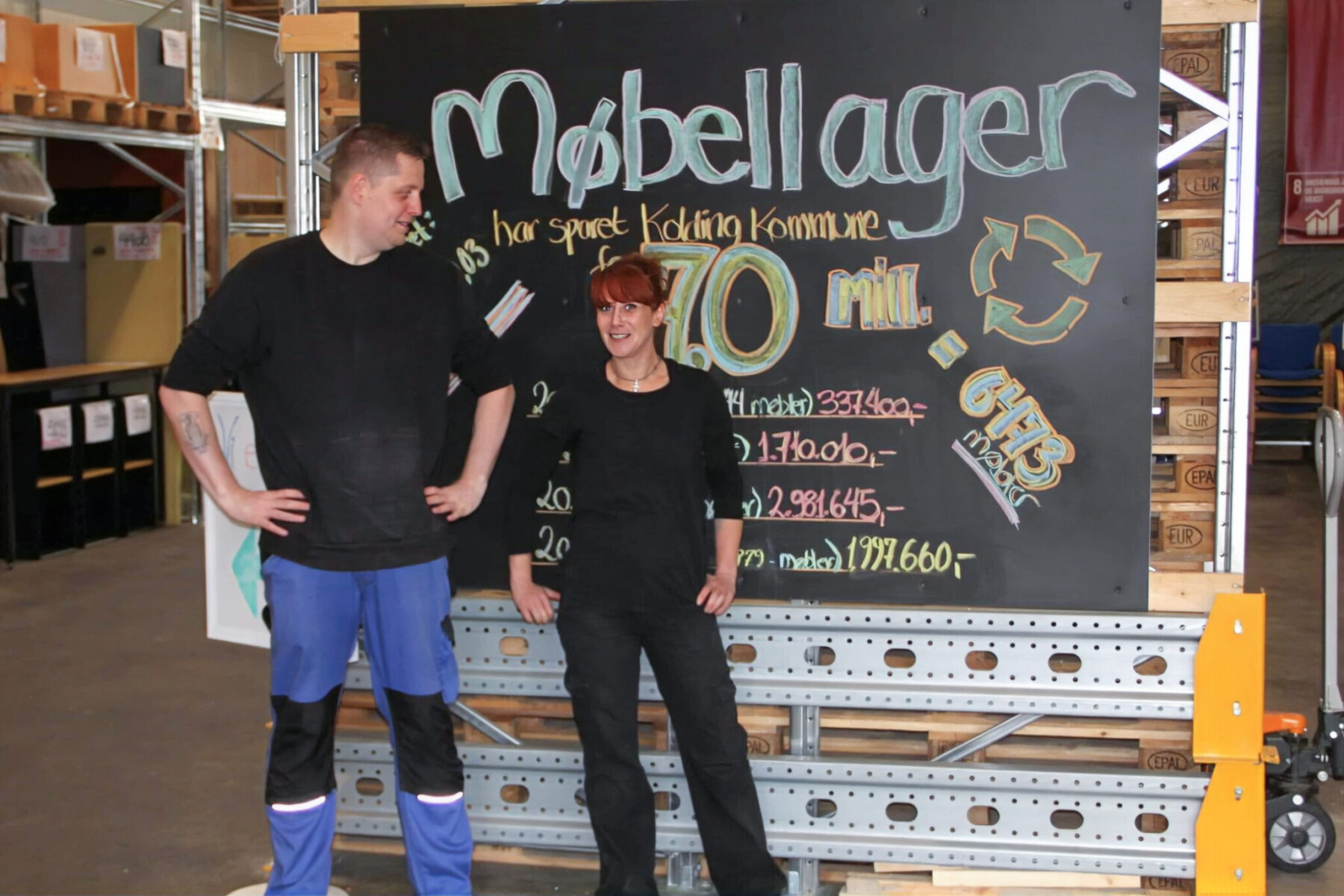
Press Release
Socio-economic gain
Read how Kolding Municipality and Huset Venture have created a circular collaboration that is a pure win-win for all parties.
Press Release
Savings in the millions
The furniture warehouse generates annual savings of two million kroner. That is far more than originally budgeted and proves that sustainability does not need to mean higher costs, quite the opposite.
The Solution
The municipality’s answer was a large, central furniture warehouse with a clear structure and a social purpose. The warehouse is run by the social enterprise Huset Venture Kolding, which has a small, dedicated team in flexible jobs handling the daily operations. Manager Ditte Rødvig and colleague Simon Niemann receive, register, and sort all incoming furniture. Each piece is photographed, given a product number, and uploaded into the municipality’s procurement system, Tellis®. This way, all departments can see the selection and order used furniture with just a few clicks.
This is job training for people who’ve been in the system for six years or more. Already, three have moved on into regular jobs, that’s super exciting.
– Ditte Rødvig, manager of Kolding Municipality’s Furniture Warehouse
Operations are deliberately built on a strong team rather than one person. As Ditte puts it: “We complement each other really well. It works best when there are two of us.” The team also fixes minor damages. “A bit of paint is often enough for people to think, this looks great,” she explains. The warehouse is staffed primarily by flexible job employees and interns, and with clear criteria they ensure that only furniture with genuine reuse potential is accepted. “There are items we don’t take in. The cheap laminate tables fall apart just from moving them,” Simon Niemann notes. The principle is simple: don’t drown in things that can’t be reused.
Tellis® at the core
All used furniture must go through the furniture warehouse and be “sold” via Tellis® for DKK 0. Departments may not give away or advertise furniture themselves. This provides a complete overview of orders and flows.
The financing model is clever. Each department has had 5% cut from its furniture budget, which funds the warehouse operations. In return, they can collect furniture from the warehouse free of charge. “Used furniture must go through the warehouse. Departments aren’t allowed to advertise on their own,” stresses Ina Hviid, head of procurement. She also highlights registration: “I’m a bit obsessive about ensuring everything gets registered, because that’s the only way we can run proper statistics.”
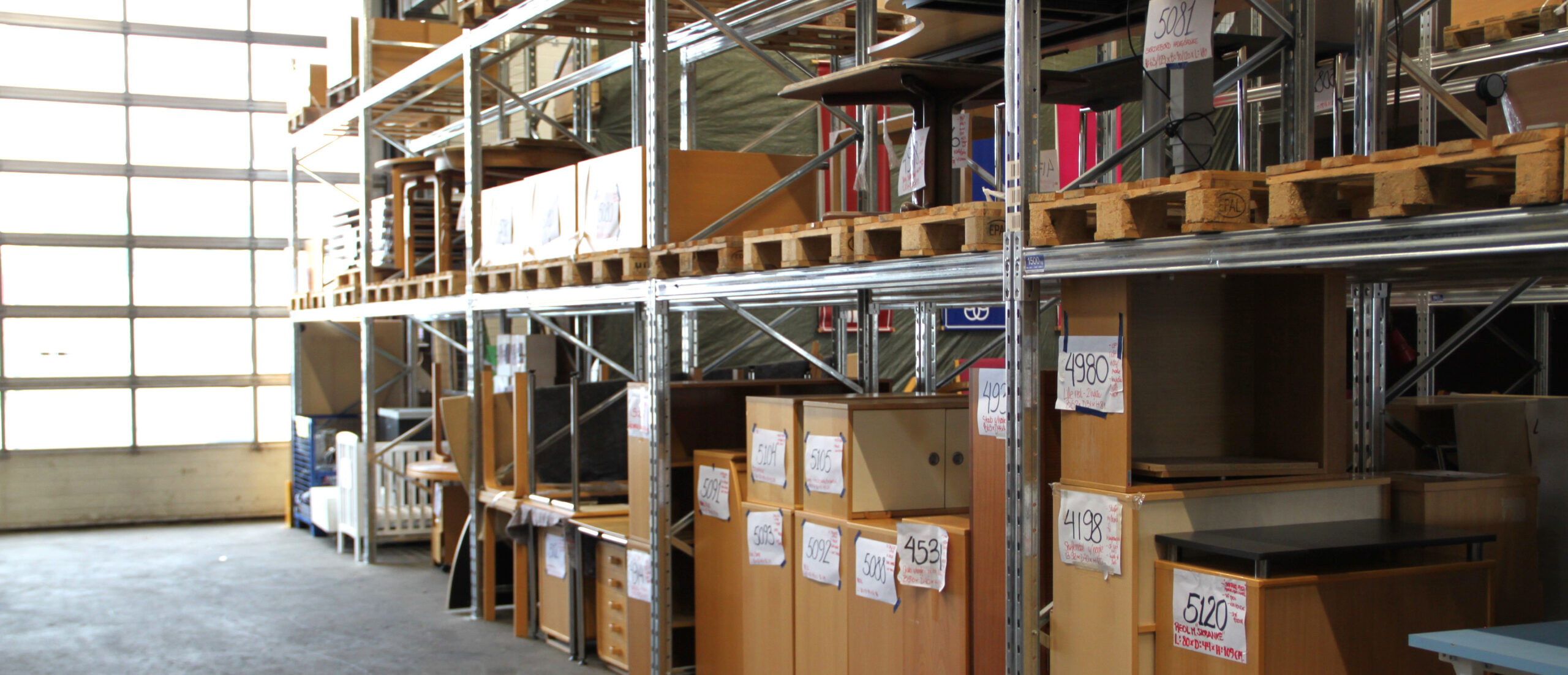
With data exports and a built-in CO₂ module, the municipality can easily calculate climate impact. For each piece of furniture, the avoided new purchase is estimated and converted into CO₂ savings. The model is simple and delivers concrete numbers that make it easy to document sustainability to both politicians and users.
The Result
Kolding Municipality’s furniture warehouse delivers clear benefits. It saves money. It reduces the climate footprint. And it gives people new opportunities in everyday life.
Key figures at a glance
- Kolding Municipality reuses 1,600–2,700 pieces of furniture per year.
- All orders are handled through Tellis® with full transparency.
- Typical CO₂ savings of around 100+ tons annually (120 tons in 2024)
- Annual financial savings of DKK 2–3 million, with over DKK 7 million saved since 2021.
- The scheme is run by flexible job employees and interns, with three already moving on to regular employment.
- The concept has already been copied by at least one other municipality.
Reuse has become the first choice instead of new purchases. Employees go to the warehouse before the catalogue, and the process feels smooth and manageable. Ditte Rødvig sums it up perfectly: “The scheme has become so well-functioning that it saves money, reduces CO₂, and changes the culture among users.”
At the same time, there is a human side. The warehouse team builds skills and confidence, and several have already moved into permanent jobs.
The numbers support the experience. In 2024, around 2,500 pieces of furniture were reused. This equalled avoided purchases worth DKK 2.7 million and savings of roughly 120 tons of CO₂. The trend continued into 2025. In the first five months, another 1,050 items were circulated, saving around 43 tons of CO₂.
Expectations haven’t just been met, they’ve been exceeded. Initiator Frank Ravn explains: “When we first opened, I thought if we could reach annual savings of DKK 500,000, that would be impressive. Now the figures show we’re saving two million a year.”
The overall picture is clear: the scheme is an economic and environmental success that also carries social responsibility. Kolding stands as a concrete example that sustainability, human value, and solid management can go hand in hand in a municipal setting. Several other municipalities have already visited to learn from the model, and Nordfyns Municipality has adopted the idea in its own organisation.
About Kolding Municipality’s Furniture Warehouse
- Kolding Municipality’s furniture warehouse was established in 2021 as a central facility for reusing the municipality’s own furniture.
- The warehouse is run in collaboration with Huset Venture Kolding, a social enterprise that creates job opportunities for people employed under special conditions.
- All of the municipality’s departments, schools, and institutions can deliver used furniture to the warehouse and order reused furniture via the procurement system Tellis® instead of buying new.
- The furniture is “purchased” internally for DKK 0, since it has already been paid for once under the municipal budget. When employees order from the warehouse, they are simultaneously taking social and environmental responsibility.
- The initiative is a concrete example of circular economy and sustainable consumption in the public sector, and Kolding Municipality is highlighted as a frontrunner in the field.
Read more at Kolding Municipality: https://www.kolding.dk

